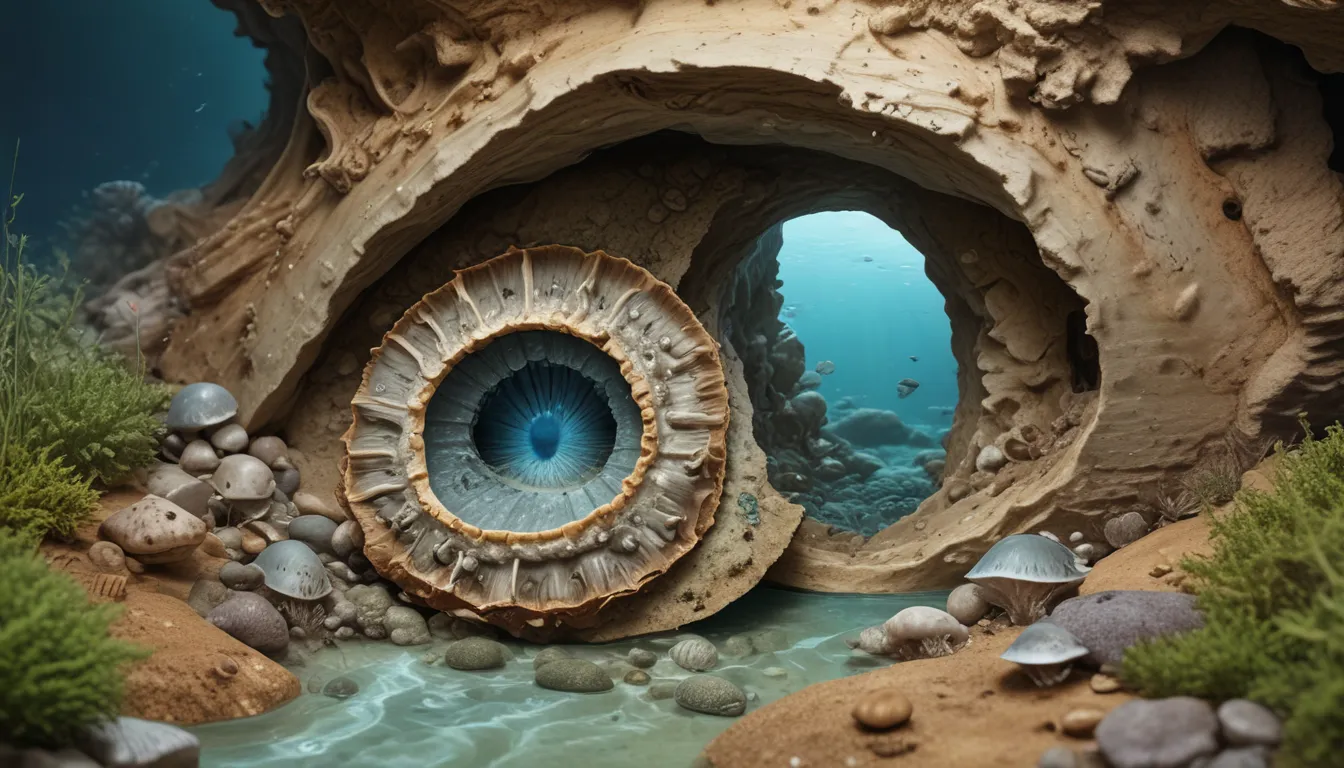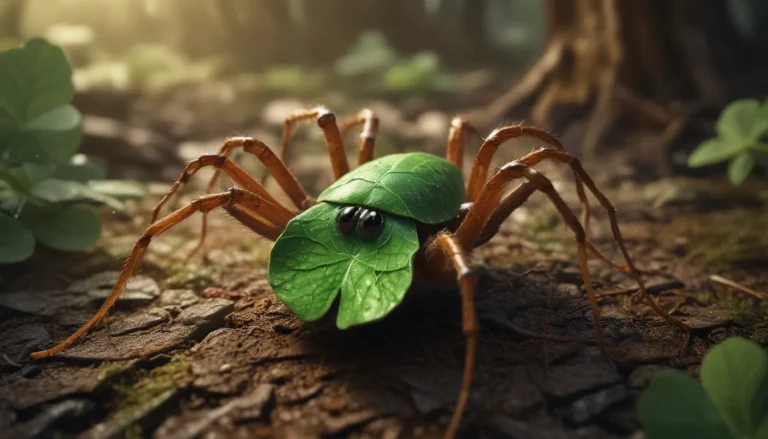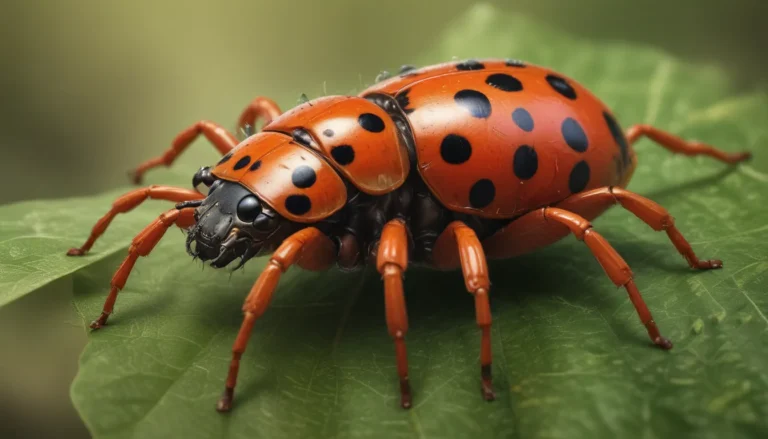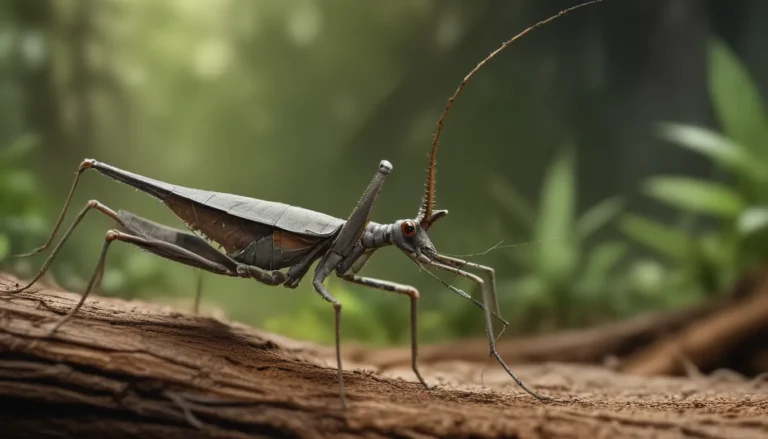The pictures we use in our articles might not show exactly what the words say. We choose these pictures to make you interested in reading more. The pictures work together with the words but don’t take their place. The words still tell you the important facts.
Have you ever wondered about the fascinating world of keyhole limpets? These marine creatures may not be as well-known as other sea creatures, but they have a wealth of intriguing characteristics that make them truly captivating. From their unique appearance to their important role in the marine ecosystem, keyhole limpets offer a wealth of knowledge waiting to be explored.
In this comprehensive guide, we will delve into 19 keyhole limpet facts, shedding light on their appearance, habitat, behavior, and significance in the underwater world. Whether you're a curious individual looking to expand your knowledge or a scientist seeking insights into marine ecosystems, this article will provide valuable information on these remarkable creatures. So, let's embark on a journey to unravel the mysteries surrounding these extraordinary beings!
Unveiling the World of Keyhole Limpets
Keyhole limpets, scientifically known as Diodora aspera, are unique marine gastropods that belong to the family Fissurellidae. These small, cone-shaped creatures are commonly found along the rocky shores of the Pacific coast of North America. What sets them apart is their distinctively-shaped shells with a keyhole-like opening, from which they derive their name.
The Architectural Marvel of Keyhole Limpet Shells
The shells of keyhole limpets boast an intricate architecture composed of multiple layers. The rough outer layer is adorned with various growths, providing camouflage and protection. In contrast, the inner layer is smooth and lined with nacre, giving the shell its vibrant coloration. This unique structure not only enhances their appearance but also contributes to their resilience in challenging environments.
A Glimpse into Keyhole Limpet Feeding Mechanism
Keyhole limpets exhibit a unique feeding mechanism as herbivores. They utilize a rasp-like structure called a radula to graze on algae and other plant matter. By scraping off food particles from rocks and surfaces, these creatures are adept at obtaining nutrients essential for their survival.
The Resilience of Keyhole Limpets
Despite their small size, keyhole limpets are resilient creatures capable of withstanding extreme environmental conditions. Their exceptionally strong muscular foot allows them to firmly attach themselves to rocks and surfaces, even in the face of strong currents and waves. This outstanding adhesion ability helps them remain steadfast in their habitats, avoiding displacement by ocean forces.
A Lifespan of Resilience and Adaptation
Keyhole limpets boast a relatively long lifespan, with some individuals living up to 15 years. This extended longevity enables them to adapt to their surroundings and play a significant role in the coastal ecosystem. Their durability and adaptability contribute to their importance in maintaining a balanced marine environment.
The Remarkable Trait of Sequential Hermaphroditism
One of the most fascinating aspects of keyhole limpets is their ability to undergo sequential hermaphroditism. They start their lives as males and subsequently transition into females, ensuring reproductive flexibility and the continuation of their species. This unique trait exemplifies the diversity and complexity of nature's mechanisms.
Insights into Keyhole Limpet Reproductive Strategy
Female keyhole limpets deposit their fertilized eggs in protective capsules attached to rocks or hard surfaces. These capsules safeguard the developing embryos until they reach maturity and hatch, ensuring the survival of the next generation. This reproductive strategy showcases the adaptability and survival instincts of these marine creatures.
Unveiling the Complex Social Structure of Keyhole Limpets
Keyhole limpets exhibit a hierarchical social structure, with dominant individuals occupying prime feeding and mating territories. Through chemical signals and sometimes aggressive behaviors, these creatures communicate and defend their territories. This complex social dynamic sheds light on the intricacies of their interactions within the marine environment.
The Diverse Diet of Keyhole Limpets
In addition to grazing on algae, keyhole limpets are adept filter feeders that consume plankton and other microscopic organisms. Their gill structures allow them to filter out food particles from the water efficiently, ensuring a diverse and nutrient-rich diet essential for their survival.
Keyhole Limpets as Ecosystem Stewards
By selectively grazing on algae, keyhole limpets play a crucial role in maintaining a balanced ecosystem in rocky intertidal areas. Their feeding habits help control excess algae growth, preventing potential harm to other marine organisms and preserving the delicate ecological equilibrium. In essence, these small creatures act as stewards of the underwater world.
The Art of Camouflage
The coloration and texture of keyhole limpets' shells serve as effective camouflage, allowing them to blend seamlessly with their rocky surroundings. This natural disguise provides them with protection against predators and enables them to evade potential threats effectively. Their camouflage prowess exemplifies their ability to adapt and thrive in their environment.
The Intriguing Reproductive Behavior of Keyhole Limpets
During the breeding season, male and female keyhole limpets engage in broadcast spawning, releasing their gametes into the water simultaneously. This synchronized spawning increases the likelihood of successful fertilization and promotes genetic diversity within the population. Their reproductive behavior showcases the marvels of nature's intricate processes.
Adapting to Adverse Environments
Keyhole limpets demonstrate remarkable adaptability to a wide range of environmental conditions, including fluctuating water temperatures and varying salinity levels. Their ability to thrive in challenging habitats underscores their ecological resilience and evolutionary adaptations to diverse environments.
The Symbiotic Relationship with Algae
Keyhole limpets host microscopic algae called zooxanthellae within their tissues, forming a symbiotic relationship. The algae provide nutrients through photosynthesis, while the limpets offer a sheltered and nutrient-rich environment for the algae to flourish. This mutualistic partnership highlights the interconnectedness of marine ecosystems.
Navigating the Perils of Predation
Keyhole limpets face predation from a variety of marine predators, including crabs, sea stars, fish, and birds. Their ability to tightly adhere to rocks and blend in with their surroundings offers some protection against predators. However, they must remain vigilant to evade potential threats in their marine habitats.
Embarking on the Journey from Larval Stage to Adulthood
After hatching from their protective capsules, keyhole limpet larvae spend a brief period in the water column before settling on a suitable substrate. This larval stage allows for dispersal and colonization of new habitats, contributing to the population's diversity and distribution. Their journey from larvae to adulthood exemplifies the cycle of life in the marine realm.
Clarifying the Taxonomic Classification of Keyhole Limpets
Despite their name, keyhole limpets belong to the family Fissurellidae and are not classified under true limpets (family Patellidae). While they share similarities in shell shape and habitat preferences, they differ in terms of their biology and behavior. Understanding their taxonomic distinction adds to the richness of their profile as marine organisms.
Valuable Contributions to Science and Gastronomy
Keyhole limpets hold commercial value in certain cultures, where they are harvested for food and esteemed as a delicacy. Their tender flesh and distinct flavor make them a sought-after seafood item in coastal regions, showcasing their culinary significance. Additionally, keyhole limpets serve as model organisms in scientific research, aiding in the study of marine ecosystems, adaptation, and environmental impacts. Their dual roles in science and gastronomy highlight the multifaceted nature of these marine creatures.
Exploring the Depths of Marine Research and Conservation
By unraveling the mysteries of keyhole limpets, researchers gain valuable insights into marine ecosystems, evolutionary adaptations, and ecological balance. These small mollusks offer a window into the intricacies of nature's mechanisms and the interconnectedness of species within the underwater world. Whether for scientific exploration or conservation efforts, understanding keyhole limpet facts contributes to the preservation and appreciation of marine biodiversity.
Conclusion: Embracing the Wonders of Keyhole Limpets
In conclusion, keyhole limpets stand as fascinating beings that embody the beauty and complexity of marine life. From their architectural marvels to their intricate behaviors, these creatures exemplify nature's intricate tapestry. By delving into the realm of keyhole limpets, we uncover a wealth of knowledge that enriches our understanding of marine ecosystems and biodiversity.
Next time you visit a rocky shoreline, take a moment to observe these remarkable creatures and appreciate the vital role they play in maintaining the health of coastal habitats. Whether you're a marine enthusiast or a curious observer, the world of keyhole limpets offers a myriad of wonders waiting to be explored and cherished.
FAQs: Unveiling More Insights into Keyhole Limpets
Q: What defines a keyhole limpet?
A: Keyhole limpets are small marine mollusks characterized by their conical shells with a distinctive keyhole-shaped opening, belonging to the family Fissurellidae.
Q: Where can keyhole limpets be found?
A: Keyhole limpets inhabit rocky intertidal zones worldwide, thriving in areas with strong wave action and abundant food sources such as algae and marine debris.
Q: How do keyhole limpets feed?
A: Keyhole limpets utilize a radula to scrape algae and food particles from rocks, creating small grooves with their muscular foot to obtain nutrients essential for their sustenance.
Q: What purpose does the keyhole opening serve in their shells?
A: The keyhole opening in keyhole limpet shells facilitates waste release and water circulation for respiration, enhancing their physiological functions within their protective shells.
Q: Can keyhole limpets be kept as pets?
A: While keyhole limpets may be intriguing to observe, they are best left in their natural habitat due to their specific environmental requirements and challenging care in captivity.
Q: What threats do keyhole limpets face in their marine habitats?
A: Keyhole limpets encounter predation from various marine predators such as sea stars, crabs, fish, and birds, highlighting the risks they navigate in their underwater environments.
Q: How do keyhole limpets contribute to marine ecosystems?
A: Keyhole limpets play a vital role in regulating algae growth in rocky intertidal areas, maintaining ecological balance and serving as food sources for higher predators in the food chain.
Q: Are keyhole limpets endangered species?
A: Keyhole limpet populations are currently not considered endangered, yet conservation efforts are crucial to safeguard their habitats and mitigate threats from habitat destruction and pollution.
Q: Are keyhole limpets harmful to humans?
A: Keyhole limpets do not pose a direct threat to humans, although their sharp shells can cause cuts if mishandled. It is advisable to handle them with care to prevent accidental injury.
Unlocking the Wonders of Keyhole Limpets
Embark on a journey into the enchanting world of keyhole limpets, where mysteries abound and marvels await discovery. These extraordinary marine creatures offer a glimpse into the intricate workings of nature and the interconnectedness of life in the underwater realm. By exploring keyhole limpet facts, we unravel the threads of biodiversity and ecological harmony that define the beauty of our oceans.
As you navigate the rocky shores or delve into marine research, remember the remarkable keyhole limpets that dwell beneath the waves, shaping the coastal ecosystems in profound ways. Embrace the wonders of these small yet resilient beings, and let their stories inspire a deeper appreciation for the intricate tapestry of marine life that surrounds us.
Together, let us continue to unveil the marvels of keyhole limpets and cherish the treasures they bring to our understanding of the natural world. Join the exploration, embrace the wonders, and unlock the secrets of these captivating marine creatures that grace our oceans with their presence.






